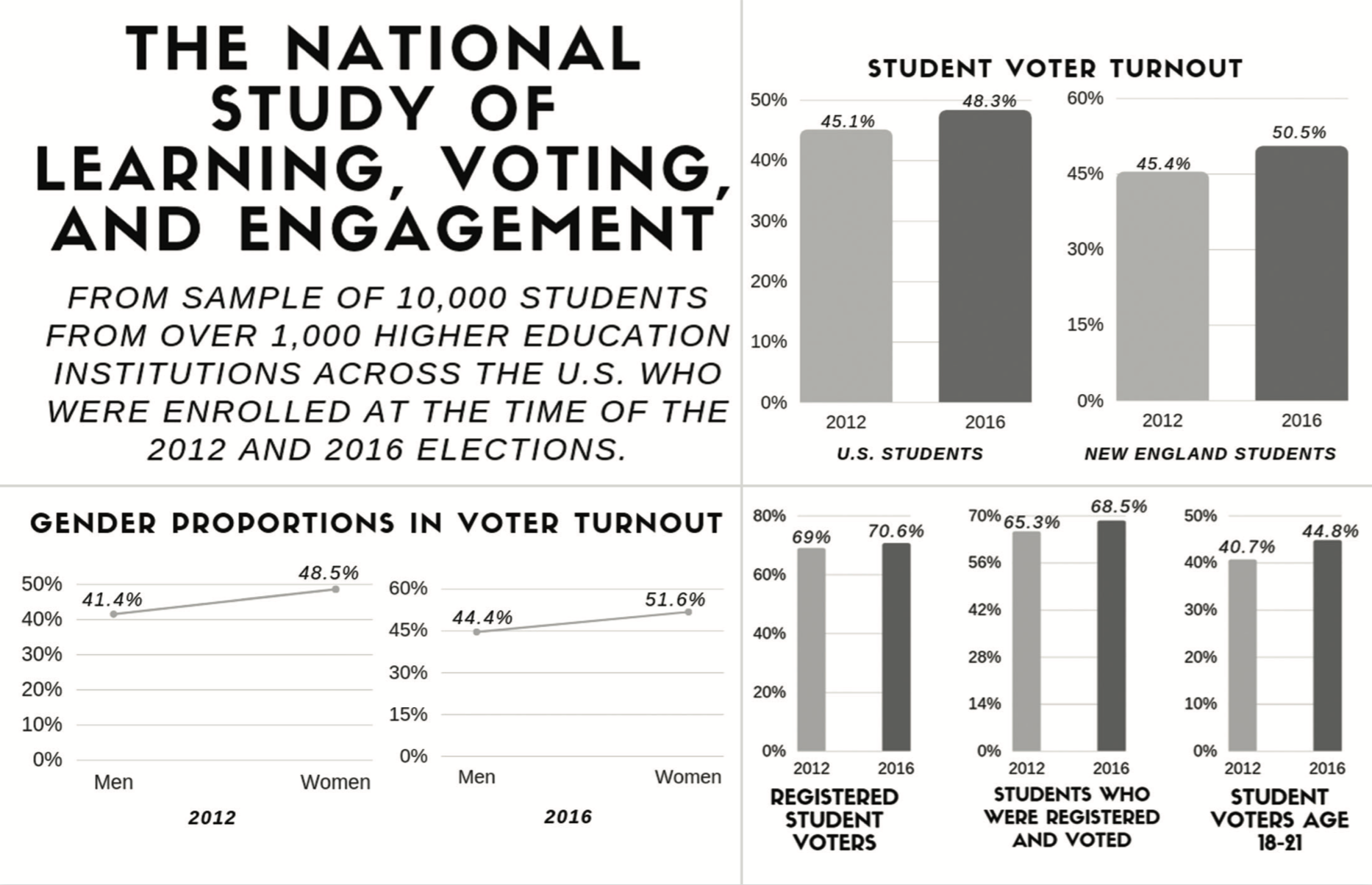By: Julie Pike, Editor-in-Chief
Universities across the U.S., including USM, have been making efforts to encourage more of their students to become registered and vote in the upcoming midterm elections.
For presidential election years, student voter turnout has been slowly increasing, from 45.1 percent in 2012 to 48.3 percent in 2016, according to a study from Tufts University. However the turnout for midterm elections is less than half that, at only 17 percent, the Campus Vote Project reported.
To combat the low student voter turnout, USM has held registration events to get more students involved.
On Sept. 25, National Voter Registration Day, all three libraries at USM had registration tables to encourage students and the public to register to vote. Huskies for Reproductive Health also hosted a voter registration drive in Gorham that day. Registration drives have also been held in the Woodbury Campus Center.
USM President Glenn Cummings has also been at the forefront of encouraging more students to vote, as Question 4 on the Maine state ballot includes a bond that would provide an extra $25 million for USM.
“We’re definitely trying to encourage as many students as possible to get out there and participate in democracy, whichever way they want to vote,” said Cummings.
Efforts being made across the country to encourage more student voters includes the Campus Election Engagement Project, a national nonpartisan project to help schools engage students in elections.
The project has been shared through the Service-Learning & Volunteering office website, which includes information on mini grants the project will award to college campuses for $500. The grant would go towards getting more students registered, educated about upcoming elections and to get more student voters.
“In general we tell our students whether they’re this side of the political spectrum or this side of the political spectrum, get out and vote, participate, because that’s what it means to be an adult,” said Cummings.
Professor Ronald Schmidt from the history and political science department said that he chooses to not have classes on election day to allow his students time to go vote. He wants more students to view voting as a habit, as it is for many senior citizens who have grown up consistently voting. The more it becomes a habit, he said, the more students will continuously show up to vote.
“The more that young people participate in elections,” Schmidt said, “the more likely they are to continue to do so.”
Schmidt added that one of the barriers preventing more students from voting is the idea that their vote doesn’t matter. He thinks that if more student voters do show up to vote, it will make a difference in the outcome of elections.
“If young voters show up in big numbers for this midterm and if they continue to show up in big numbers for presidential elections, that will make them look like a better investment, said Schmidt. “That kind of thing can drive policy platforms.” Policies on higher education costs, healthcare and student loans, he added.
The Campus Vote Project reported that young adults ages 18-24 make up 21 percent of the eligible voting population. In 2008, 21 percent of young adults ages 18-29 said that they weren’t registered to vote because they missed the registration deadline, six percent said they didn’t know how to register.
Maine, Schmidt says, is a state that doesn’t have a lot of barriers preventing people from voting, especially with the same day voting registration.
“Voting has to be a primary commitment of our government,” Schmidt said. “Voting should be as easy as possible and it should be encouraged as possible.”
Business Insider reported last year that 30 states allow workers to take time off to vote, with some restrictions. Maine is not one of them. However, the article added that some employers may offer time off to their employees.
Schmidt has heard a lot about the importance of student voting from universities, this year including USM.
“I do hear the administration and student groups talk about the importance of elections,” he said. “I think we do a decent job at this, but we could always see more, more information and more potential like ride shares to go to voting centers.”
Cummings hopes that students and the USM community show their support for Question 4 this November. “What’s most important is to get out there and vote,” he said.

